How To Grow Salvia
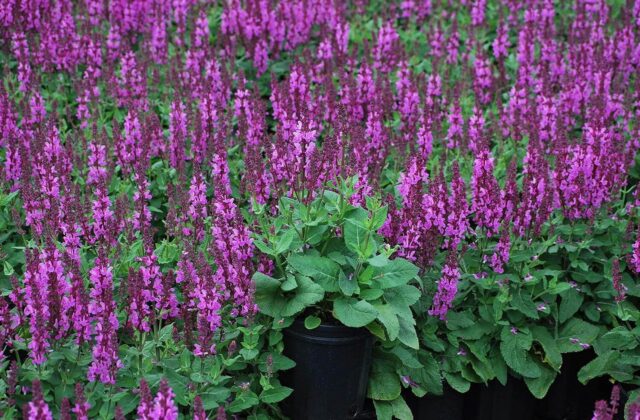
Introduction
Gardens highly value Salvias, commonly known as sages, for their prolonged blooming and resilience in hot, arid conditions. They offer diverse fragrances, blooms, plant structures, and colors, featuring vibrant flowers, square stems, and appealing, often fragrant foliage. To embark on the journey of how to grow salvia, it’s essential to offer well-drained soil and ample sunlight. Also, engage in occasional pruning when cultivating salvia.
These plants are among the best summer-blooming annuals and perennials. They are ideal for mass plantings, borders, containers, accents, and cut flowers due to their versatility. One notable advantage of cultivating salvias lies in their capacity to attract hummingbirds, butterflies, and other pollinators. Furthermore, salvias demonstrate resistance to deer and rabbits owing to their pungent foliage.
Stature and Dimensions
Salvia has diverse, fast-growing species. Plants vary in height, some grow tall while others are shorter and better for decorating flower bed edges. The width of salvias spans from 12 inches to 4 feet, contingent on the specific species. Understanding Salvia plant dimensions is crucial for precise and careful cultivation.
Types Of Salvia
2.1 Salvia Officinalis
Salvia officinalis, commonly known as Sage, is a versatile herb belonging to the Lamiaceae family. Sage is a fragrant perennial plant with elongated leaves that can grow up to 50 cm tall. This herb shares its lineage with other renowned aromatic herbs such as mint, thyme, oregano, and rosemary.
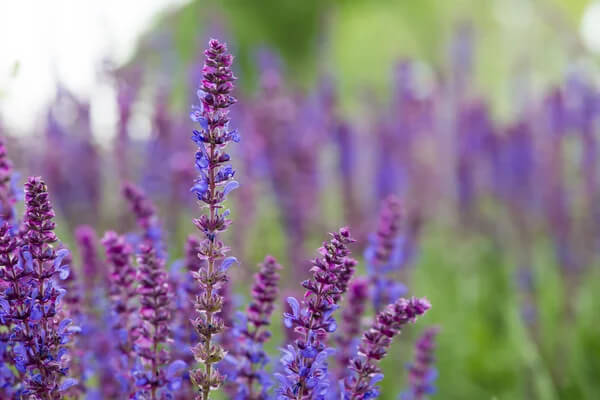
2.2 Salvia Splendens
Scarlet Sage, also called Salvia splendens, is a tropical perennial that people often grow as an annual. Gardeners cultivate this species widely for its bright scarlet flowers, which inject vibrant red hues into sunny landscapes. Some cultivars offer variations in color, including white, salmon, pink, lavender, burgundy, and orange blossoms. Scarlet sage continuously blooms from June until frost arrives.
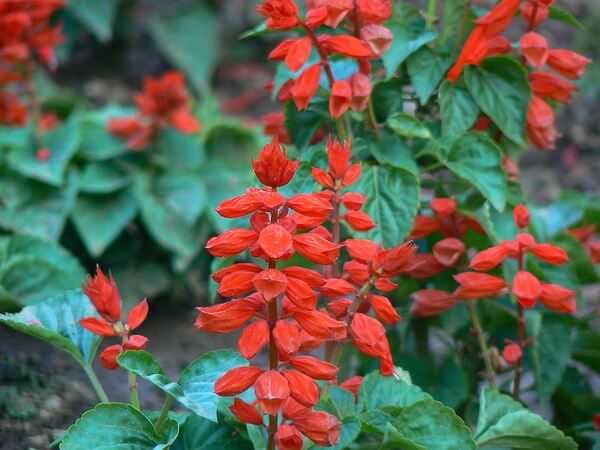
2.3 Salvia Farinacea
Mealycup Sage, or Salvia farinacea, has blue, purple, and lavender cultivars like ‘Victoria Blue’ and ‘Evolution.’ ‘Victoria Blue’ is known for its genuinely blue flowers. Similar to scarlet sage, mealycup sage boasts an extended flowering period, producing blooms from May to the onset of frost.
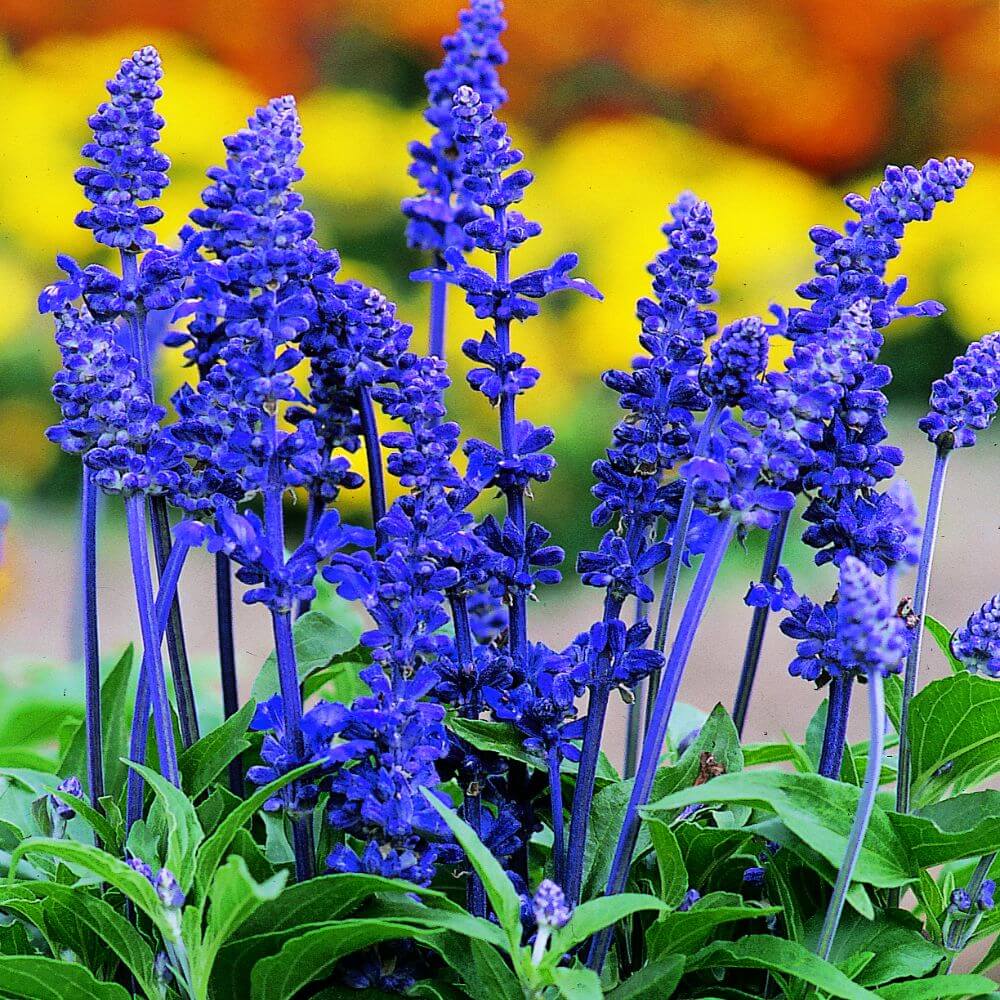
2.4 Salvia Coccinea
Texas Sage, also recognized as Salvia coccinea, showcases red flowers, with cultivars offering pink and coral blooms. ‘Summer Jewel Pink,’ a smaller yet exquisite variety, blooms profusely with dainty flowers from late spring to early fall. Can be grown as a perennial in warm climates or as an annual by starting seeds indoors before the last frost.
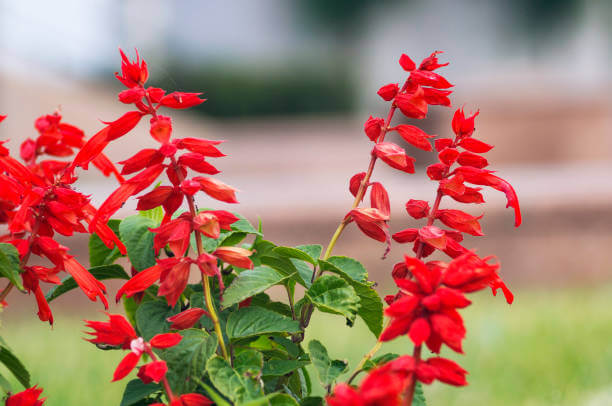
2.5 Salvia Nemerosa
Woodland Sage, or Salvia nemerosa, is a vigorous perennial with purplish-blue blooms from June to September. Popular cultivars, including ‘Marcus,’ ‘Caradonna,’ ‘Sensation,’ and ‘Blue Hill,’ display lance-shaped leaves and require deadheading for a tidy appearance.
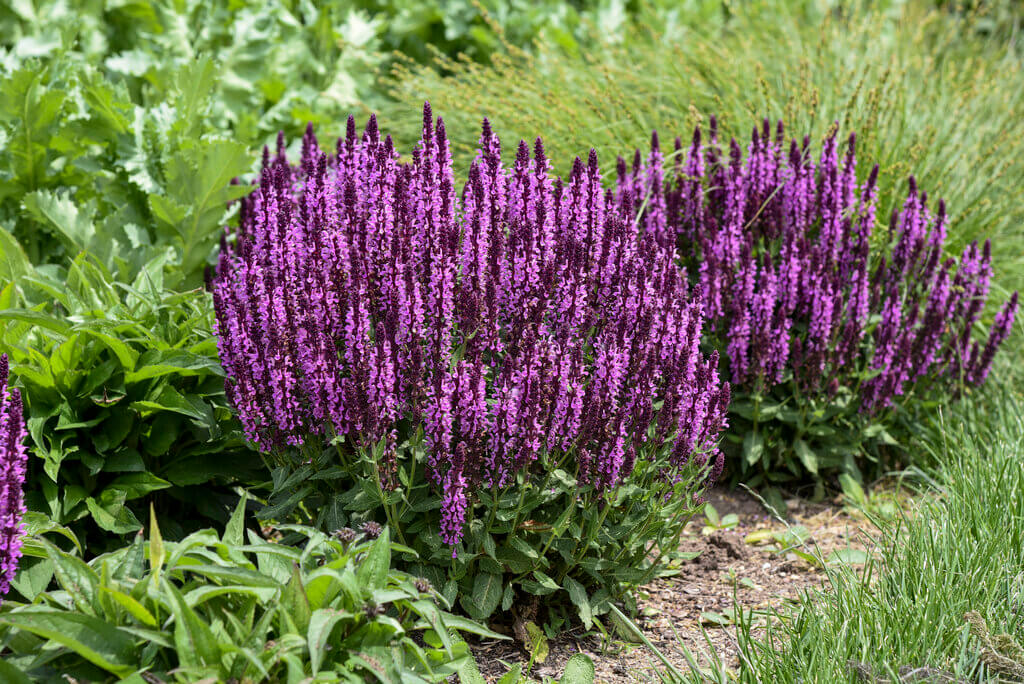
2.6 Salvia Greggii
Autumn Sage, identified as Salvia greggii, is a perennial, shrubby plant with hot pink flowers blooming from summer to early fall. Cultivars such as ‘Wild Thing’ and ‘Raspberry Delight’ offer variations in pink hues, with the former considered more cold-hardy. Providing a burst of color, autumn sage attracts bees and butterflies to gardens.
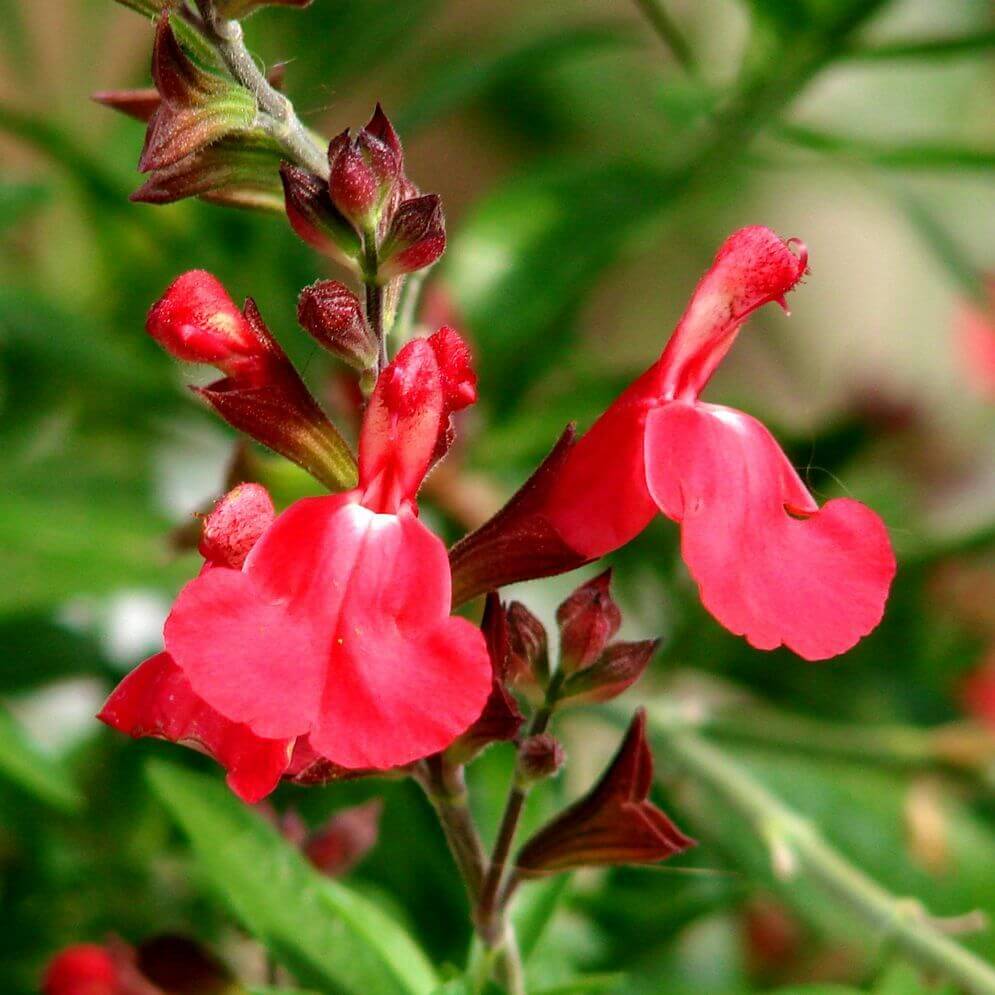
2.7 Salvia X Sylvestris
Scientifically named Salvia x sylvestris, Wood Sage results from crossbreeding S. nemorosa and S. pratensis. Notable cultivars include ‘May Night,’ which showcases blue-violet flowers from May to June, and ‘Pink Dawn,’ a shorter plant with pink blooms.
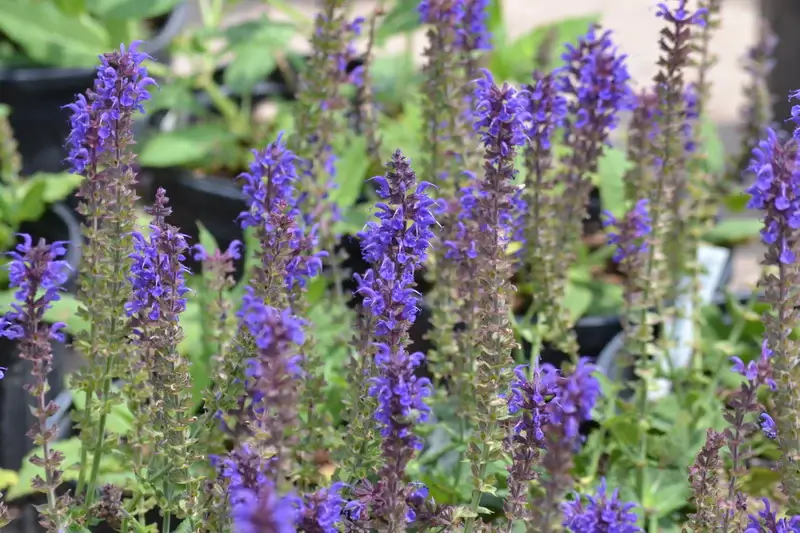
2.8 Salvia Elegans
Pineapple Sage, scientifically known as Salvia elegans, is a tender perennial with a shrubby growth habit. Named for its pineapple-like scent when crushed, this plant produces wispy scarlet flowers from late summer to mid-fall. Moreover, its vibrant color and unique fragrance make it a popular choice among gardeners.Suitable for container gardening, it tolerates light shade and prefers warm climates.
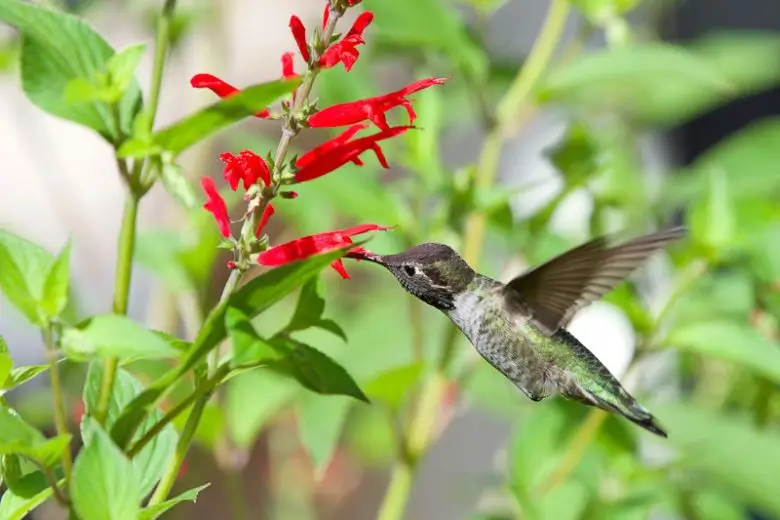
2.9 Salvia Leucantha
Mexican Bush Sage, or Salvia leucantha, is an evergreen perennial with a shrubby growth habit, blooming with purple or white-and-purple flowers from late summer to frost. With velvety, grayish-green leaves, this salvia attracts butterflies and hummingbirds, making it a favorite for late-season container gardens.
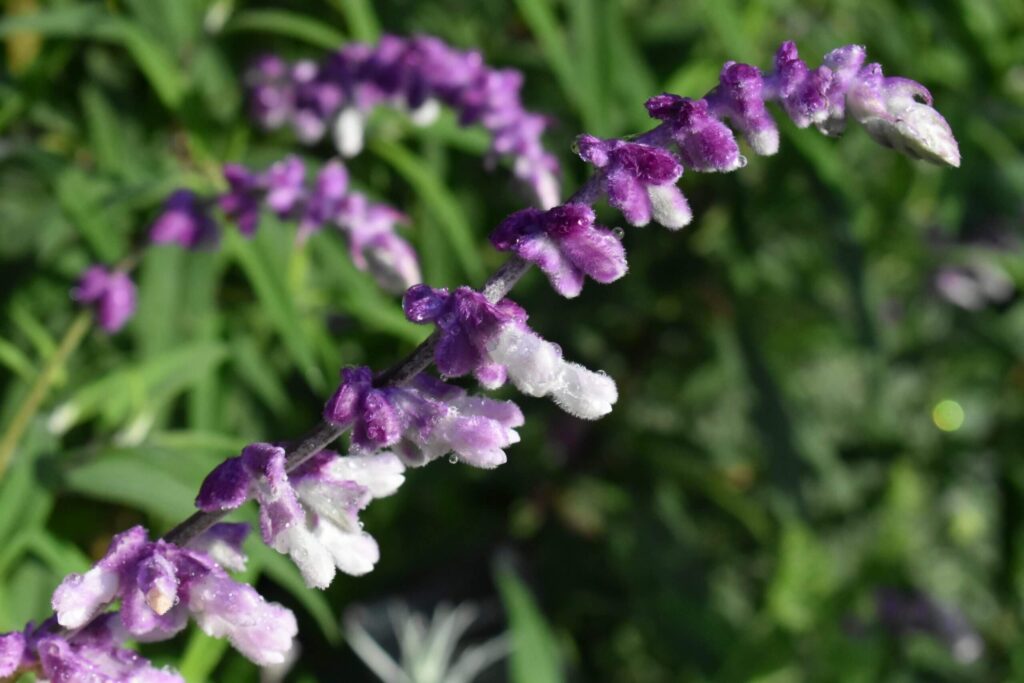
2.10 Salvia Divinorum
Diviner’s Sage, scientifically referred to as Salvia divinorum, is rarely grown as an ornamental due to its unique characteristics. Recognized simply as “salvia,” it has a history of ceremonial use by the Mazatec tribes of southern Mexico. While it features attractive purple flowers, the plant is challenging to grow from seeds, and its legal status varies across U.S. states, with some considering it illegal and others decriminalizing it.
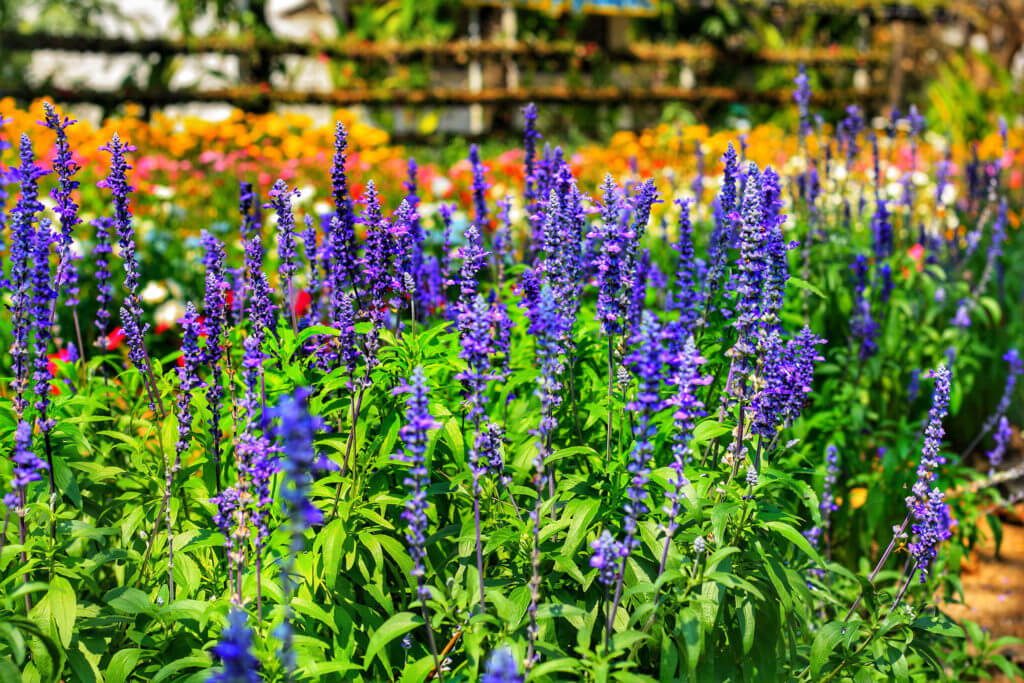
How To Grow Salvia: A Comprehensive Guide
Discovering how to grow Salvia involves understanding its unique characteristics and requirements for optimal cultivation.
Optimal Soil and Climate for Salvia Growth
- Choosing the Right Climate and Exposure: Salvia, commonly known as sage, thrives in warm climates and prefers sunny locations. When cultivating it on a windowsill or balcony, consider avoiding the north side of the house. In the vegetable garden, plant it away from shading elements. Careful selection of its placement is crucial, as it’s a perennial species that can occupy the same spot for years.
- Resilience to Climate: Although sage prefers mild climates, it exhibits remarkable resistance to frost, enduring short periods of it without significant harm. Despite its hardiness, it’s advisable to shield it from prolonged exposure to frost. Learning how to grow Salvia in your garden involves selecting the right spot with sufficient sunlight, as these herbs thrive in sunny conditions.
- Managing Moisture: Salvia, being an aromatic plant, is not daunted by drought conditions. However, caution is needed in situations of prolonged humidity in the soil or air, as this could pose challenges for its growth.
- Adaptable Ground for Salvia Growth: Salvia, with its aromatic essence, accommodates various soil types, staying true to its Mediterranean roots. It thrives unless faced with challenges such as water stagnation and excessively compact or clayey soil. Particularly, Salvia flourishes on calcareous substrates.
Propagation Techniques
Incorporating Salvia into your garden involves learning how to grow Salvia from seeds or cuttings, offering you flexibility in propagation methods.
- Seed Germination vs. Cutting Propagation: Explore the two primary methods for bringing a new Salvia officinalis plant to life – the gradual process of seed germination or the simpler and favored cutting propagation.
- Division Method: Consider an alternative approach by uprooting a mature sage plant and dividing its head into multiple parts.
- Ready-Made Seedlings: For a convenient option, discover the ease of purchasing pre-grown sage seedlings available at your local nursery.
Sowing: Ensuring Success
- Seed Characteristics: Sage seeds are tiny with a low germination rate. To enhance the chances of success, it’s crucial to sow generously, exceeding the required quantity.
- Optimal Sowing Time: The ideal period for sage sowing is early spring, typically between March and April. This timing allows for the development of well-established plants that can be transplanted with confidence in May.
Cutting: Simple Propagation
- Rooting Sage: Sage proves to be an easily rooted shrub, allowing for the quick generation of a new plant through cutting. The technique is akin to that of rosemary propagation, requiring access to an existing plant. A noteworthy advantage of this asexual propagation method is the assurance of maintaining the exact variety of the mother plant without genetic variations.
- Procedure and Timing: Initiate sage cutting during the spring season. Select a fairly young branch from the mother plant, ensuring a minimum length of 10 cm. Prepare the cutting by stripping the lower end of the leaves, retaining only the top 4 leaves.
- Planting and Care: Plant the prepared cutting in a soil and sand mixture, ensuring regular watering to prevent the soil from drying out. By March, the twig is likely to have developed into a seedling ready for transplanting, with May being an opportune time for the next phase.
Transplanting Sage Seedlings: Essential Steps for Optimal Growth
- Preparing the Soil: Upon acquiring or purchasing sage seedlings, the initial step involves planting them in the ground. Begin by cultivating the soil to create an inviting environment for the aromatic plant’s roots. A thorough deep digging and superficial hoeing are recommended. This is an opportune moment to incorporate compost, enriching the soil with essential nutrients.
- Ideal Transplanting Period: The timeframe for transplanting is versatile, allowing for salvia officinalis seedlings to be planted throughout the year, excluding the winter months when the ground is notably frozen. In regions with intense heat, it’s advisable to avoid transplanting during the hottest periods of summer.
- Spacing Considerations: For personal use, a single sage plant is generally sufficient. However, for those extensively utilizing sage in decoctions and other applications, two plants at most may be appropriate. If considering professional cultivation on a larger scale, maintain a planting space of approximately 40 cm between plants and 70 cm between rows.
- Post-Transplant Care: Following the transplant, prioritize watering. Ensure regular watering in the subsequent days until the plant establishes strong roots, promoting a healthy and thriving sage plant.
Sage Cultivation: Simple Techniques
Whether grown in the open field, vegetable patch, garden, or in a pot on a windowsill or balcony, cultivating Salvia officinalis (sage) follows a straightforward technique.
Sage Fertilization: Nurturing the Growth
To ensure a thriving sage plant, it is recommended to provide a nutrient-rich foundation, with compost being a suitable choice. However, it’s essential to be mindful that excessive nutrient introduction can impact the aroma of the leaves. While sage has a good nitrogen requirement for abundant leaf production, an annual supply through compost or manure pellets can be beneficial.
Pruning Sage: Essential Maintenance for Optimal Growth
Similar to numerous perennial plants, periodic pruning is beneficial to regulate the growth of sage. Understanding how to grow Salvia extends to seasonal care, where adjusting watering and pruning practices ensures the health and longevity of these resilient herbs
Frequency of Pruning
Sage should undergo pruning twice a year. Before spring, it involves the removal of dry branches and leaves. At the end of the flowering period, a more decisive pruning is recommended, involving the removal of a significant portion of the green branches. This practice rejuvenates the shrub, ensuring its health and productivity.
Pruning Technique
Use well-sharpened shears to cut sage branches effectively. This meticulous approach contributes to the overall well-being of the sage plant.
Consider incorporating a layer of organic mulch around your salvia plants. This not only helps in retaining soil moisture but also regulates soil temperature and suppresses weed growth, promoting a healthier and more robust salvia garden.
Maintenance Tips
Salvia Diseases And How To Prevent
Salvia plants are generally hardy and resistant to many diseases. However, they can still face some issues that may affect their health. Here are a few common diseases that may impact Salvia:
- Powdery Mildew:
- Symptoms: White powdery substance on leaves, stunted growth.
- Prevention/Treatment: Ensure good air circulation, avoid overhead watering, use fungicidal sprays.
- Root Rot:
- Symptoms: Wilting, yellowing leaves, and a foul odor from the roots.
- Prevention/Treatment: Ensure well-draining soil, avoid overwatering, and treat with fungicides if necessary.
- Fungal Leaf Spot:
- Symptoms: Dark spots with a yellow halo on leaves.
- Prevention/Treatment: Remove infected leaves, avoid overhead watering, and apply fungicides.
- Crown and Stem Rot:
- Symptoms: Wilting, dark lesions near the plant base.
- Prevention/Treatment: Plant in well-draining soil, avoid overwatering, and treat with fungicides.
- Aphid Infestation:
- Symptoms: Curling leaves, stunted growth, and a sticky residue on the plant.
- Prevention/Treatment: Introduce natural predators, like ladybugs, or use insecticidal soap.
- Whitefly Infestation:
- Symptoms: Yellowing leaves, tiny white insects on the undersides of leaves.
- Prevention/Treatment: Use insecticidal soap, introduce natural predators, and maintain a clean garden.
- Spider Mites:
- Symptoms: Webbing on the plant, stippling on leaves.
- Prevention/Treatment: Increase humidity, spray with insecticidal soap, and remove affected leaves.
- Downy Mildew:
- Symptoms: Yellowing and curling of leaves, grayish-purple fuzz on the undersides.
- Prevention/Treatment: Provide good air circulation, avoid overhead watering, and use fungicides.
To keep your Salvia plants healthy, it’s essential to monitor them regularly, practice good garden hygiene, and address any issues promptly. Additionally, choosing disease-resistant varieties can contribute to a thriving Salvia garden.
Culinary Powerhouse
Sage (Salvia officinalis) stands as a culinary powerhouse, enhancing a myriad of dishes with its robust and aromatic essence. Often celebrated for its affinity with meats, particularly poultry and pork, sage finds its place in marinades, rubs, and roasting, imparting a savory depth. A classic inclusion in stuffings and dressings, this herb elevates holiday fare with its distinctive flavor. Whether crisped in brown butter for pasta, tossed into roasted vegetables, or blended into herb combinations, sage contributes a warm and comforting note to diverse culinary creations.
Additionally, its role in infused oils, vinegars, and cheese pairings showcases the herb’s versatility. For those looking to embrace the full potential of sage, understanding how to grow Salvia officinalis becomes crucial. Cultivating this herb ensures a fresh and readily available supply, allowing home cooks to experience the true essence of sage in their culinary ventures. While its culinary finesse adds allure to dishes, a soothing herbal tea brewed from sage leaves not only provides flavor but also potential health benefits. In essence, sage proves to be an indispensable herb, adding both a culinary finesse and aromatic allure to a wide spectrum of delightful dishes.
Conclusion
In conclusion, mastering how to grow Salvia unveils a delightful journey into cultivating this aromatic herb with its unique charm. From selecting the right spot with ample sunlight to ensuring well-draining soil, the art of cultivating Salvia involves a careful balance of factors. Embrace the intricacies of seasonal care, understand the importance of proper watering, and appreciate the resilience of this perennial herb. Whether you choose to propagate Salvia from seeds or cuttings, or opt for container gardening, the key to a thriving Salvia garden lies in a combination of knowledge and attentive care. So, as you embark on your Salvia-growing adventure, may your garden flourish with the vibrant beauty and fragrance of this remarkable herb. Happy gardening!
12 comments
I was suggested this web site by my cousin. I am not sure whether this post is written by him as no one else
know such detailed about my difficulty. You’re
wonderful! Thanks!
Here is my blog vpn coupon code 2024
I don’t even know how I ended up here, but I thought this post was great.
I do not know who you are but certainly you are going
to a famous blogger if you are not already 😉 Cheers!
Visit my blog post vpn special code
Do you mind if I quote a few of your articles as long as I provide credit and sources back
to your weblog? My website is in the exact same area of interest as
yours and my visitors would genuinely benefit from some
of the information you present here. Please
let me know if this okay with you. Many thanks!
Here is my web blog :: vpn special code
Fantastic goods from you, man. I have have in mind your stuff prior to and you’re just too wonderful.
I really like what you have obtained right here, certainly like what you’re saying and the
way in which through which you assert it. You are making it entertaining
and you still take care of to keep it sensible. I cant wait to learn far
more from you. This is actually a wonderful
site.
Also visit my web blog – vpn special coupon
Hi there i am kavin, its my first time to commenting anywhere, when i read this paragraph i thought i could also make comment due to this good article.
Here is my website; vpn 2024
Truly when someone doesn’t understand then its up to other viewers that they will help, so here it occurs.
My webpage: vpn special coupon
I just like the helpful information you supply to your articles.
I’ll bookmark your blog and test once more here frequently.
I am slightly certain I’ll learn many new stuff right here!
Best of luck for the following!
Here is my page: vpn special code
I am actually pleased to glance at this webpage posts which carries tons
of helpful information, thanks for providing such information.
Feel free to surf to my blog … vpn special code
If you desire to obtain a great deal from this post then you have to apply
these strategies to your won blog.
Also visit my webpage :: facebook vs eharmony
Good day! I could have sworn I’ve been to your blog
before but after looking at a few of the posts I realized it’s
new to me. Regardless, I’m certainly happy I came across it and I’ll be bookmarking it and checking back frequently!
Also visit my web-site; eharmony special coupon code 2024
Hey! Do you use Twitter? I’d like to follow you if that would be okay.
I’m definitely enjoying your blog and look forward to new posts.
My web blog :: nordvpn special coupon code
Your point of view caught my eye and was very interesting. Thanks. I have a question for you.